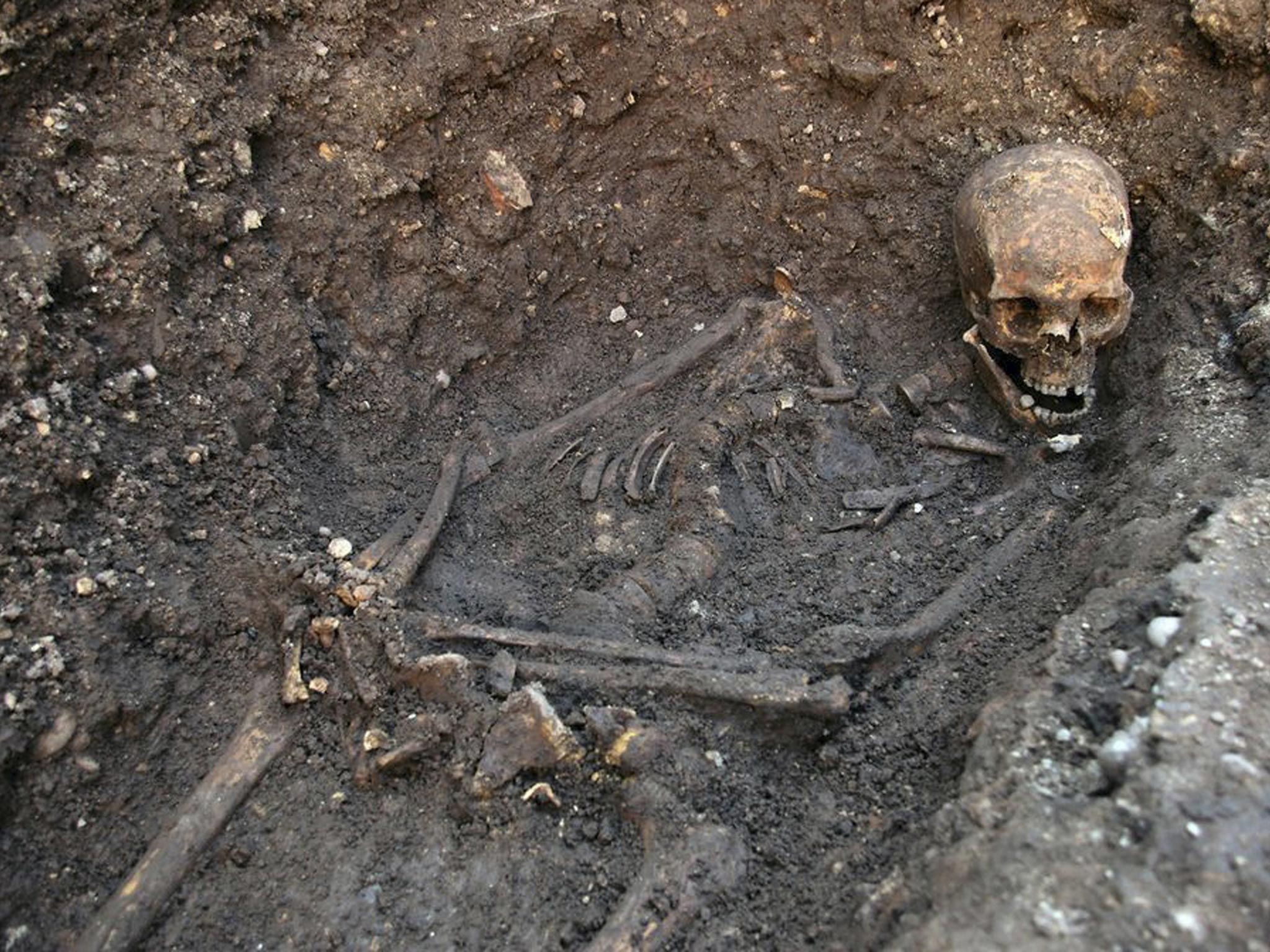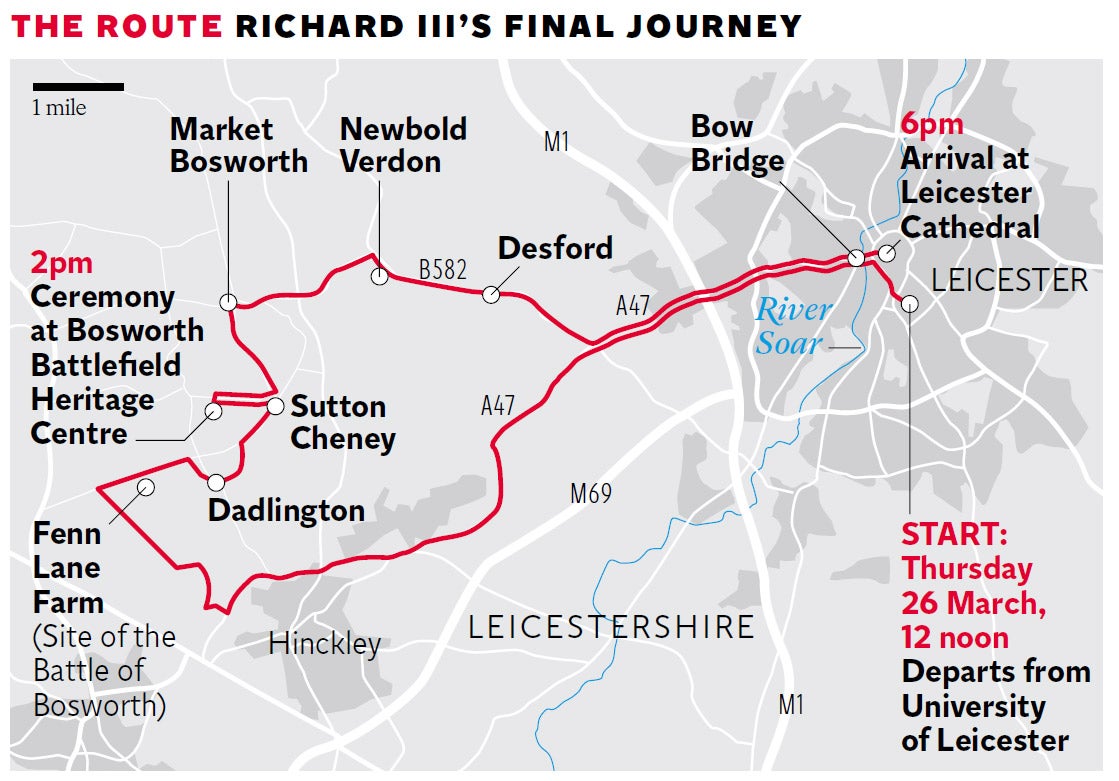Yorkists fear an elaborate King Richard III reburial could reignite War of the Roses
Last Plantagenet king to be reinterred in Leicester next year

Your support helps us to tell the story
From reproductive rights to climate change to Big Tech, The Independent is on the ground when the story is developing. Whether it's investigating the financials of Elon Musk's pro-Trump PAC or producing our latest documentary, 'The A Word', which shines a light on the American women fighting for reproductive rights, we know how important it is to parse out the facts from the messaging.
At such a critical moment in US history, we need reporters on the ground. Your donation allows us to keep sending journalists to speak to both sides of the story.
The Independent is trusted by Americans across the entire political spectrum. And unlike many other quality news outlets, we choose not to lock Americans out of our reporting and analysis with paywalls. We believe quality journalism should be available to everyone, paid for by those who can afford it.
Your support makes all the difference.It will be an elaborate send-off which might match Kim Jong-il's, culminating in three days of “lying in state”.
But the controversial reinterment of King Richard III at Leicester Cathedral next year is threatening to reignite the War of the Roses, after Yorkists claimed that the monarch could suffer the indignity of public abuse during his extended final journey.
The ceremonial route for the cortege, which will transport the mortal remains of King Richard III from the University of Leicester, via Bosworth Battlefield Heritage Centre, to Leicester Cathedral next March, was announced on Tuesday.
A match for any contemporary state funeral, a hearse will leave the University of Leicester during the late morning of Sunday 22 March, and will travel to Fenn Lane Farm, reputedly the site of King Richard’s death, before moving on to nearby village parish churches of Dadlington and Sutton Cheney, chosen because it is believed that King Richard took his final Mass at St James’ church there on the eve of the battle.

The Bishop of Leicester, the Rt Revd Tim Stevens, will then lead a ceremony at the Bosworth Battlefield Heritage Centre in the early afternoon, on the site of Henry Tudor’s decisive victory in 1485 and the demise of the last Plantagenet king.
The cortege will then travel to Market Bosworth, Newbold Verdon and Desford before making its way back to Leicester.
The King’s mortal remains will re-enter the City of Leicester in mid-afternoon at Bow Bridge, where they will be greeted by the City Mayor, Sir Peter Soulsby, and the Lord Mayor, councillor John Thomas.
A horse-drawn hearse will then be used to complete the final section of the King’s journey from Bow Bridge through the city centre to the Cathedral, where the Dean of Leicester, the Very Revd David Monteith, will meet the coffin when it arrives at the Cathedral just before 6pm.

Dr Richard Buckley, from the University of Leicester, who was lead archaeologist on the dig for Richard III, which discovered the king’s remains under a Leicester council car park in 2012, will then formally pass a copy of the Ministry of Justice licence granted to the university for the remains of the King to the Dean of Leicester.
At that point, the responsibility for the remains officially passes from the University of Leicester to the Church.
King Richard’s coffin will be carried into the cathedral for an evening service of compline, at which the Catholic Archbishop of Westminster, Cardinal Vincent Nichols, will preach the sermon.
King Richard’s remains will lie in repose in the cathedral on Monday, Tuesday and Wednesday, during which time members of the public will be invited to visit the Cathedral to pray and pay their respects.
The reburial service will take place on Thursday 26 March, in the presence of the Most Rt Revd Justin Welby, Archbishop of Canterbury, finally bringing to an end to Richard III’s journey.
A judicial review concluded that Richard’s body should be buried in Leicester following objections by the descendants of distant relatives and rival claims that he should be returned to York in accordance with his own wishes.
Mary McKenzie of the For Richard Society, which is campaigning to rehabilitate the reputation of the late monarch, said the Leicester reinterment route was overblown and inappropriate for the monarch.
“It should be a quieter, more religious affair, with more of his personal faith in the service,” Ms McKenzie said. “The route probably wouldn’t have much relevance for Richard as his body was treated so badly on its return from Bosworth to Leicester.”

Ms McKenzie fears Richard’s body will again be denied the respect it deserves. “We have had letters from academics who fear he will be abused on this final journey. Already we have seen someone place a red rose on Richard’s statue at Leicester Cathedral. Even now there are people who would call him an usurper when his body is on public display.”
The reburial organisers believe the events will deliver a worthy farewell for the King and maximise the opportunity for local people to pay their own respects. A spokesman for the Leicester Cathedral Quarter Partnership Board said: “We are now working closely with partners in the district and the parishes to plan the detail of how the passing of the cortege will be marked.”
Subscribe to Independent Premium to bookmark this article
Want to bookmark your favourite articles and stories to read or reference later? Start your Independent Premium subscription today.
Join our commenting forum
Join thought-provoking conversations, follow other Independent readers and see their replies
Comments